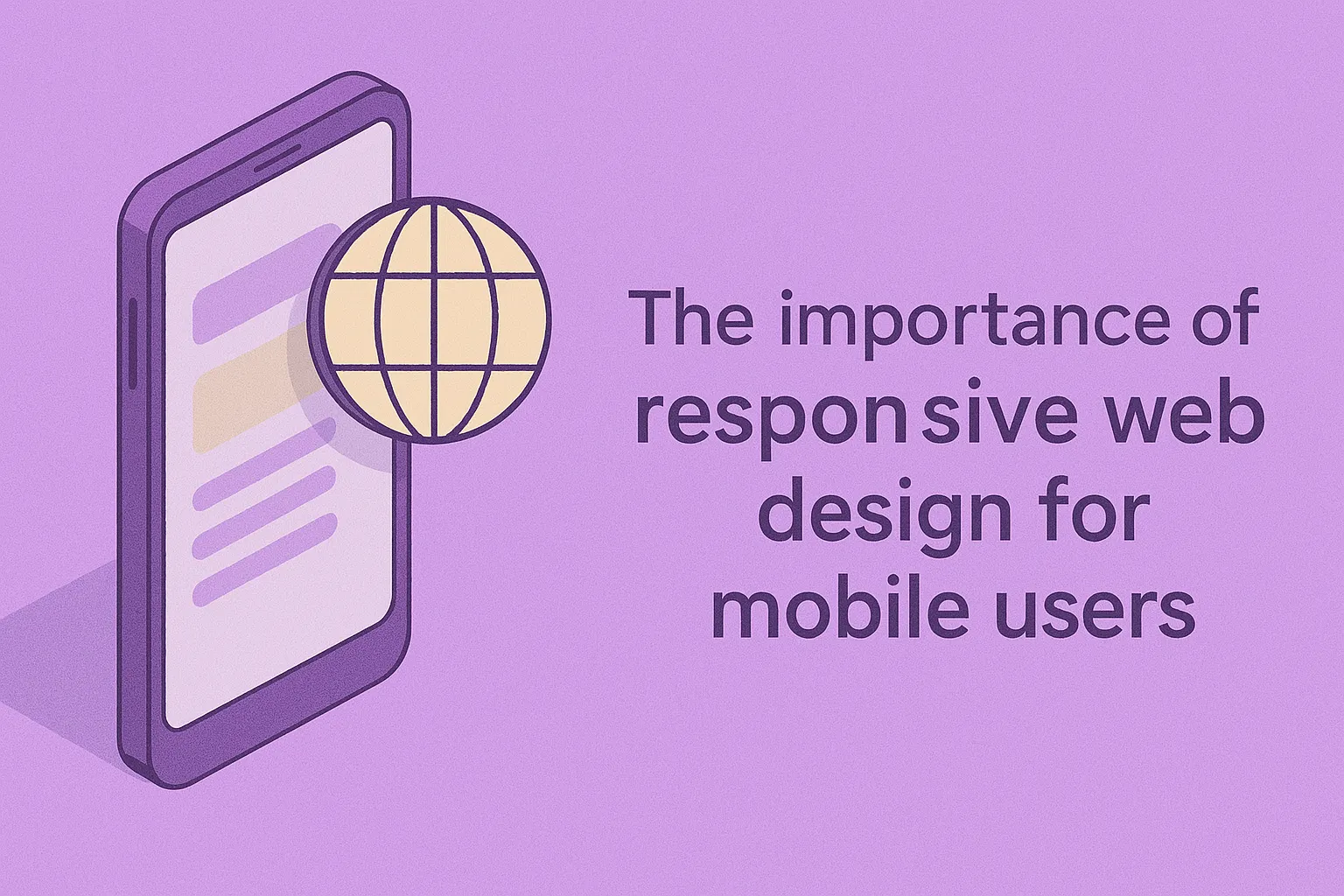The Importance of Responsive Web Design for Mobile Users

Mobile devices have become integral to our lives in today's digital landscape. With the increasing popularity of smartphones and tablets, it has become imperative for businesses to prioritize mobile user experience. This is where responsive web design comes into play. Responsive web design is a powerful approach that ensures websites adapt seamlessly to different screen sizes and devices, providing an optimal browsing experience for mobile users. This article will explore the significance of responsive web design and its impact on mobile user engagement, search engine optimization, and conversion rates.
Understanding Responsive Web Design: A Brief Overview
Responsive web design is a revolutionary approach that allows websites to adapt seamlessly to different devices, screen sizes, and orientations. Instead of creating separate versions of a website for each device, responsive design uses flexible layouts, fluid grids, and media queries to adjust the website's content and visual elements automatically. This ensures that users can access and navigate the site effortlessly, whether using a desktop computer, a smartphone, or a tablet.
One of the primary benefits of responsive web design is its ability to provide a consistent user experience across various devices. By optimizing the layout, text, images, and functionality for mobile screens, responsive design eliminates the need for users to zoom, scroll horizontally, or deal with distorted visuals. This increases user satisfaction and engagement, leading to higher conversion rates and overall website performance.
It is vital in reducing bounce rates, which is a critical metric for search engine optimization (SEO). When a website is not mobile-friendly and fails to provide a seamless experience on smaller screens, users are likelier to leave immediately, increasing the bounce rate. Search engines like Google consider bounce rates when ranking websites, so having a responsive design can positively impact your organic search rankings and visibility.
Responsive web design future-proofs your website as new devices with different screen sizes and resolutions emerge. Rather than creating a new version of your site for each device, responsive design ensures that your website can adapt and deliver an optimal experience to users, regardless of their device. This flexibility saves time and resources, allowing you to focus on creating high-quality content and engaging user experiences.
Enhanced User Experience on Mobile Devices
Mobile users have distinct needs and preferences when browsing websites on their devices. They expect fast-loading pages, intuitive navigation, and visually appealing interfaces. Responsive web design addresses these expectations by optimizing the website's performance on mobile devices, resulting in an enhanced user experience.
With responsive design, websites automatically adjust layouts, font, and button sizes to ensure easy readability and navigation on smaller screens. This eliminates the need for users to pinch and zoom or struggle to find essential information or interactive elements.

By providing a seamless user experience, responsive design encourages visitors to spend more time on the site, exploring its content and engaging with its features.
A crucial aspect of the mobile user experience is page load speed. Mobile users are often on the go and have limited time and patience for slow-loading websites.
It optimizes the website's code, images, and resources to ensure fast and efficient loading on mobile devices. By reducing page load times, responsive design enhances the overall user experience, decreases bounce rates, and increases the likelihood of users staying on the site and converting.
Responsive design takes into account mobile devices' touch-based interaction. With the prevalence of touch screens, websites need to be optimized for finger-friendly interactions. Responsive design adjusts the size and spacing of buttons and interactive elements, making them easier to tap and navigate. This optimization enhances user experience, reduces frustration, and improves overall engagement.
Improved Mobile SEO and Search Rankings
Search engines like Google prioritize mobile-friendly websites in their search results, considering them indicators of a positive user experience. By implementing responsive web design, you signal to search engines that your website is optimized for mobile users. This, in turn, can positively impact your search rankings and visibility, leading to increased organic traffic and potential customers.
It also eliminates the need for duplicate content across multiple versions of your site. Having separate mobile and desktop versions of your website can lead to content duplication issues, confusing search engines, and diluting your website's authority. With a single responsive website, you ensure that search engines can easily crawl, index, and understand your content, strengthening overall SEO efforts.

Responsive web design encourages mobile users to engage with your website and stay longer, reducing bounce rates. When users encounter a website that is not mobile-friendly, they are more likely to leave immediately, resulting in higher bounce rates. Search engines consider bounce rates as a negative signal, which can adversely affect your search rankings. With responsive design, you provide a seamless and user-friendly experience, increasing the chances of users exploring your site, interacting with your content, and reducing bounce rates.
It enables better mobile optimization for local search. Mobile users often rely on their devices to find local businesses and services. By ensuring that your website is responsive and mobile-friendly, you improve its visibility in local search results, increasing the chances of attracting local customers. This is particularly beneficial for businesses with physical locations, as responsive design helps drive foot traffic and conversions from mobile users in your area.
Increasing Conversion Rates with Responsive Design
Conversion rates are a critical metric for any website owner. Whether your goal is to generate leads, sell products, or increase newsletter sign-ups, a responsive web design can significantly impact your conversion rates. By delivering a seamless and user-friendly experience, responsive design removes barriers that might hinder users from taking the desired actions on your site.
A responsive website eliminates the need for users to pinch and zoom, scroll excessively, or struggle to find essential information or buttons. Instead, the website automatically adjusts to fit their screens, making it effortless for users to browse, interact, and convert. This improved user experience on mobile devices can lead to higher conversion rates, increased sales, and more significant revenue for your business.
Responsive web design allows consistent branding and messaging across all devices. Maintaining a cohesive look and feel, regardless of the screen size, reinforces your brand identity and builds trust with your audience. Consistency in design and messaging plays a significant role in persuading users to convert, creating a sense of reliability and professionalism. When users have a positive perception of your brand, they are more likely to trust your offerings and complete the desired actions.
It contributes to faster load times on mobile devices. Mobile users have little patience for slow-loading websites and are likelier to abandon a page that takes too long to load. Responsive design optimizes the website's code, images, and resources to ensure efficient loading on smaller screens. By reducing load times, you create a smoother and more enjoyable browsing experience, increasing the chances of users staying engaged and converting.
Responsive design facilitates a seamless multi-channel experience for users who switch between devices. With responsive web design, users can start their journey on one device and seamlessly continue it on another without disrupting their user experience. This flexibility is particularly valuable for e-commerce businesses, allowing users to browse and shop conveniently across different devices, ultimately leading to higher conversion rates.
Adapting to Various Mobile Devices and Screen Sizes
By leveraging fluid grids and flexible layouts, responsive design lets your website dynamically adjust its content and visual elements based on the user's device. Whether someone is accessing your website on a small smartphone, a larger tablet, or even rotating their device between portrait and landscape modes, responsive design ensures that your content remains accessible and visually appealing. This adaptability eliminates users' frustration with pinching, zooming, or scrolling excessively to consume your content, resulting in a smoother and more enjoyable browsing experience.
The flexibility of responsive web design extends beyond screen sizes alone. It also accounts for the different resolutions and pixel densities of mobile devices. With responsive design, your website's images and graphics are optimized to look crisp and clear on high-resolution screens, providing users with an enhanced visual experience. This attention to detail enhances your website's overall professionalism and aesthetics, which can positively impact user perception and engagement.
Responsive design future-proofs your website as new mobile devices with different screen sizes and resolutions enter the market. Instead of creating separate versions of your site for each new device, responsive design ensures that your website can adapt and deliver an optimal experience to users, regardless of their device. This scalability saves time, resources, and maintenance efforts, allowing you to focus on creating high-quality content and engaging user experiences without being limited by specific device requirements.
How Responsive Design Boosts Mobile Engagement
Mobile engagement is crucial for the success of any online business. Responsive web design plays a significant role in enhancing mobile engagement by delivering a user experience that is intuitive, visually appealing, and easy to interact with.
A responsive design makes visitors more likely to engage with your website's content, explore different pages, and interact with interactive elements. This can include tapping call-to-action buttons, filling out forms, watching videos, or sharing your content on social media platforms. By providing a positive and seamless user experience, responsive design encourages users to stay on your site longer and take the desired actions, ultimately driving mobile engagement and achieving your business goals.
Contact Eastmoor Digital
By implementing responsive web design, you can stay ahead of the competition, meet the expectations of your mobile users, and drive meaningful results for your business. If you're ready to optimize your website for mobile users and leverage the power of responsive web design, contact Eastmoor Digital. Our team of experienced professionals can help you create a responsive website that enhances user experience, boosts search engine visibility, and maximizes conversion rates. Contact us today to discuss your requirements and advance your online presence.
